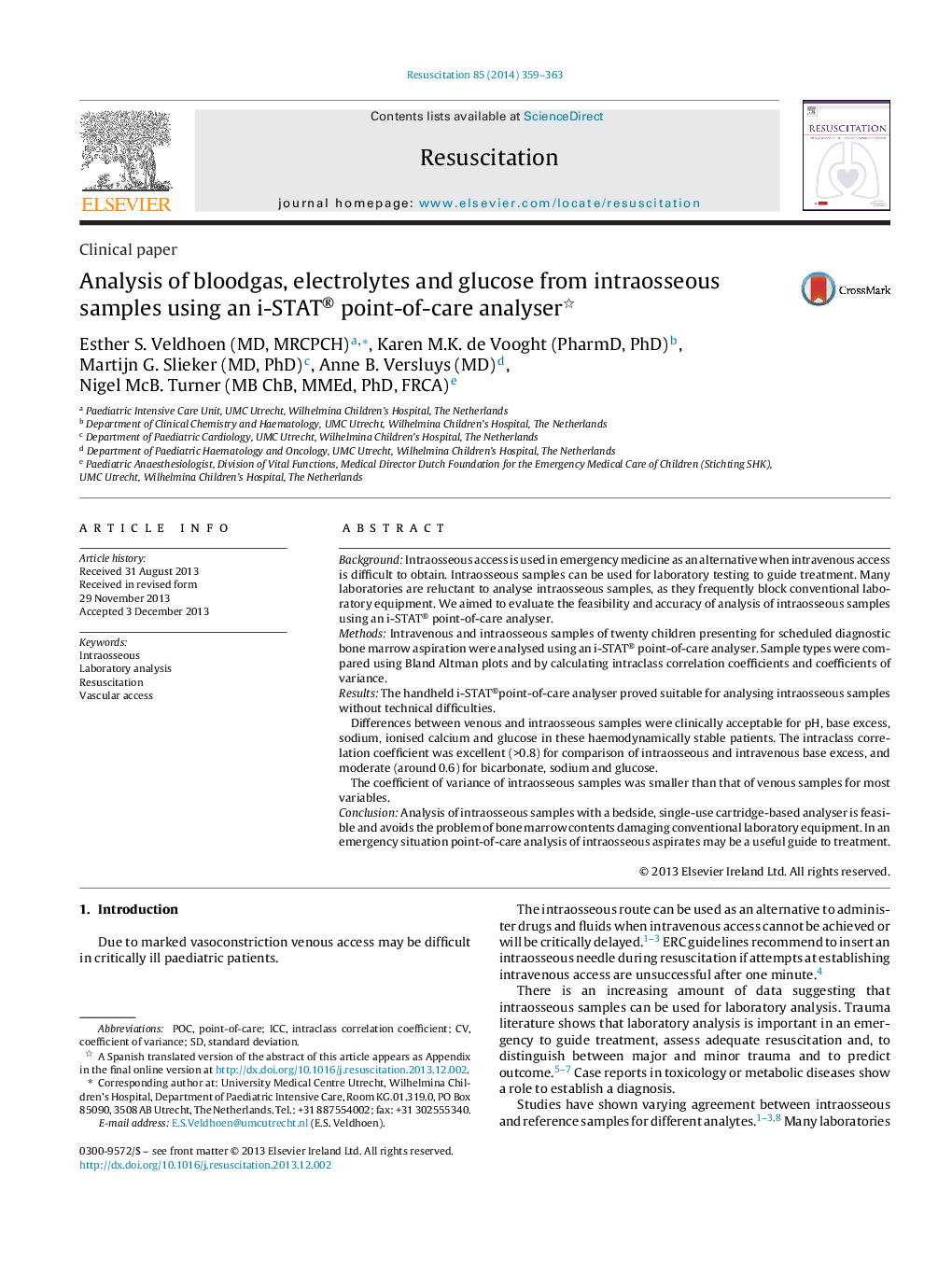| کد مقاله | کد نشریه | سال انتشار | مقاله انگلیسی | نسخه تمام متن |
|---|---|---|---|---|
| 5998695 | 1181446 | 2014 | 5 صفحه PDF | دانلود رایگان |

BackgroundIntraosseous access is used in emergency medicine as an alternative when intravenous access is difficult to obtain. Intraosseous samples can be used for laboratory testing to guide treatment. Many laboratories are reluctant to analyse intraosseous samples, as they frequently block conventional laboratory equipment. We aimed to evaluate the feasibility and accuracy of analysis of intraosseous samples using an i-STAT® point-of-care analyser.MethodsIntravenous and intraosseous samples of twenty children presenting for scheduled diagnostic bone marrow aspiration were analysed using an i-STAT® point-of-care analyser. Sample types were compared using Bland Altman plots and by calculating intraclass correlation coefficients and coefficients of variance.ResultsThe handheld i-STAT®point-of-care analyser proved suitable for analysing intraosseous samples without technical difficulties.Differences between venous and intraosseous samples were clinically acceptable for pH, base excess, sodium, ionised calcium and glucose in these haemodynamically stable patients. The intraclass correlation coefficient was excellent (>0.8) for comparison of intraosseous and intravenous base excess, and moderate (around 0.6) for bicarbonate, sodium and glucose.The coefficient of variance of intraosseous samples was smaller than that of venous samples for most variables.ConclusionAnalysis of intraosseous samples with a bedside, single-use cartridge-based analyser is feasible and avoids the problem of bone marrow contents damaging conventional laboratory equipment. In an emergency situation point-of-care analysis of intraosseous aspirates may be a useful guide to treatment.
Journal: Resuscitation - Volume 85, Issue 3, March 2014, Pages 359-363